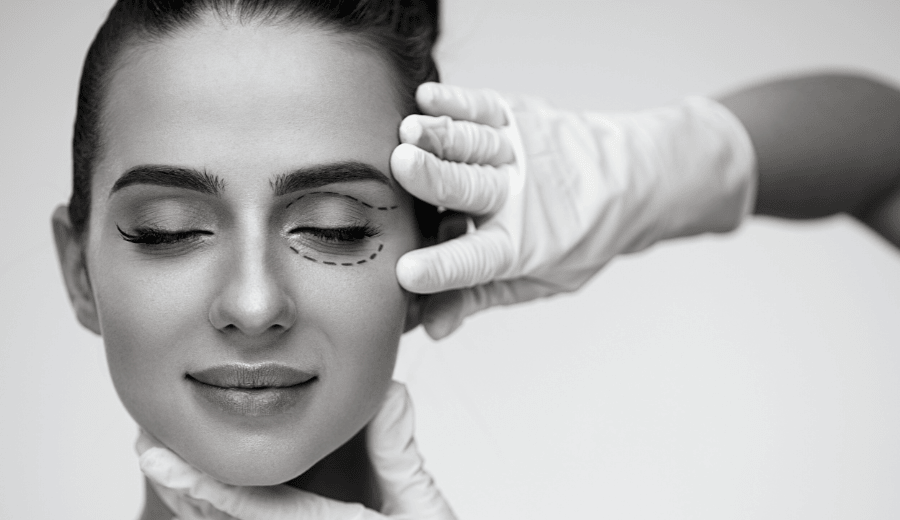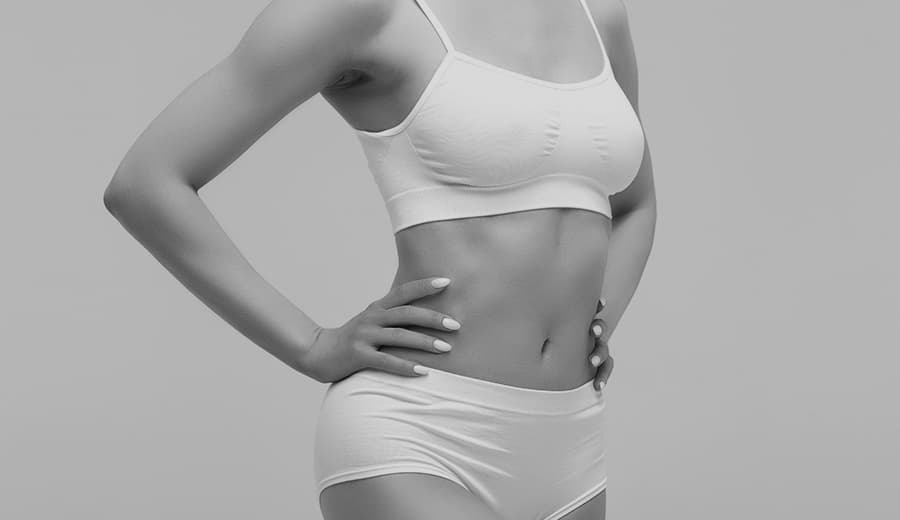May 4th, 2024
Dr. Mulholland, Md
Having areas of loose or sagging skin can negatively impact confidence and can detract from the aesthetic achievements of dramatic weight loss. Fortunately, there are a range of ways to address this common condition, and here we’ll present a comprehensive guide to how to remove or diminish the appearance of loose skin.
Whether you’re dealing with changes after weight loss, effects of aging, or post-pregnancy body transformations, understanding how to manage loose skin can enhance both your comfort and self-confidence. In this article, we’ll explore various causes of loose skin and delve into effective solutions, from surgical options to helpful lifestyle changes.
What Causes Loose Skin?
Loose skin can occur as a result of significant weight loss, natural aging, and pregnancy. Each of these factors contributes differently to a reduction in skin elasticity and changes in the volume of underlying fatty tissues.
- Weight Loss: When a person experiences rapid or significant weight loss, particularly when more than 100 pounds are lost, the skin may not retract immediately to conform to the reduced body mass. This phenomenon is largely due to the skin’s loss of elasticity after being stretched for an extended period. The ability of the skin to snap back depends on various factors including the person’s age, the length of time the skin was stretched, and their overall skin health, which is influenced by genetics, nutrition, and hydration levels. For more on this type of loose skin, check out our article: “The Post Weight Loss Edition: Skin Removal Surgery In Toronto.”
- Pregnancy: During pregnancy, the skin stretches to accommodate the growing fetus. After childbirth, the skin might not return to its pre-pregnancy tightness immediately, if at all. The retraction of skin postpartum varies widely among women and can depend on several factors, such as the birth person’s age, the number of pregnancies she has had, her skin type, and how well her skin was cared for during pregnancy.
- Aging: As we age, our skin naturally loses collagen and elastin, proteins that contribute to skin elasticity and firmness. This loss decreases the skin’s ability to retain its shape and firmness over the underlying tissues. Environmental factors, lifestyle choices such as smoking or excessive sun exposure, and genetics also play crucial roles in how quickly these proteins degrade in the skin.
By understanding these detailed factors, individuals can better anticipate changes in their skin and seek appropriate treatments or lifestyle adjustments to manage or mitigate loose skin.
Areas of Concern
Different areas of the body can exhibit loose skin, each requiring specific approaches for tightening. Let’s break down the most common regions of the body where lax skin is often found:
- Stomach: The stomach is an area in which many people develop loose or excess skin, especially after significant weight loss or pregnancy. For tailored solutions available at TPS, check out our skin tightening stomach procedures.
- Face: Facial skin, particularly under the eyes, can sag with age or changes in weight. We offer targeted saggy face skin treatments, including specialized under eye skin tightening procedures.
- Neck: Loose skin on the neck can significantly age one’s appearance. This is sometimes unfortunately termed “turkey neck” and can be a giveaway of ageing, even when the rest of the face is smooth and wrinkle-free.
- Buttocks: Sagging skin on the buttocks can impact the area’s appearance and tone, but several methods are available to tighten this skin and enhance the buttocks’ overall shape. Non-invasive procedures for saggy butts have gained popularity due to their minimal downtime and lower risk compared to surgery.
- Arms: Loose skin on the arms is pejoratively referred to as “bat wings” or “bingo wings” and can make people with this condition self-conscious about wearing short sleeves in public. The underarm region is especially prone to sagging skin in later life. Fortunately, sagging skin on the arms can be treated with several highly effective procedures.
- Legs: Tightening loose skin on the legs involves a combination of treatments and lifestyle adjustments. Loose skin in this region often concentrates in the thighs following significant weight loss and can also develop in later life.
7 Ways to Tighten Loose Skin
The good news for people concerned about loose or sagging skin is that various treatments and interventions can produce excellent results, improving appearance and quality of life.
1: Surgical Procedures
Skin surgery is often the most effective approach for achieving long-lasting skin tightening and removal of excess skin. This is particularly true in cases of extreme weight loss, where plastic surgery may be the only solution to achieve the desired aesthetic results. At TPS in Toronto, we offer a variety of surgical procedures tailored to address loose skin concerns:
- Facelift: Designed to reduce sagging and folds on the lower half of the face, a facelift can dramatically enhance your overall facial appearance by tightening the skin and underlying muscles, and removing excess skin.
- Neck Lift: This procedure targets the loose skin on the neck, creating a more youthful and refined contour. It is ideal for correcting age-related sagging and wrinkles in the neck area.
- Tummy Tuck (Abdominoplasty): The tummy tuck is a popular choice for removing excess abdominal skin and tightening the abdominal muscles. This procedure is particularly beneficial for individuals who have undergone significant weight loss or pregnancy, resulting in a smoother, flatter stomach.
- Brachioplasty (Arm Lift): An arm lift effectively removes loose skin from the upper arms, offering a more toned and contoured appearance. This surgery is ideal for patients who have experienced significant weight loss and are looking to tighten the remaining skin.
- Mommy Makeover: This comprehensive combination of body contouring procedures is designed to restore pre-pregnancy body shapes. The Mommy Makeover offers great value by addressing multiple areas, such as the abdomen, breasts, and hips, in one treatment plan, tailored to meet each patient’s unique needs.
In addition to our core surgical offerings, TPS provides a range of other procedures designed to enhance and rejuvenate various areas of the body with minimal invasiveness when applicable.
For those looking to improve the appearance of their eyes and reduce the signs of aging, Blepharoplasty offers a way to remove excess skin and fat from around the eyes. The Cheek Lift is an excellent option for elevating the midface area to achieve a more youthful contour. For less invasive needs, the Suture Suspension Threadlift provides a minimally invasive alternative to traditional facelifts, using threads to subtly lift and reposition facial tissues. A Brow Lift can rejuvenate the forehead area, smoothing lines and raising the eyebrows to create a brighter, more alert appearance.
Those not requiring full abdominoplasty may benefit from a Mini Tummy Tuck, which targets the lower belly with less recovery time.
Lastly, a Thigh Lift can dramatically improve the shape and tone of the thighs by removing excess skin and fat, making it ideal for those who have undergone significant weight loss. These procedures, particularly the thread lift, offer less downtime and can be appealing to those seeking effective results with a quicker return to daily activities.
2: Non-Surgical Procedures
At TPS, our non-surgical options provide effective solutions with less downtime for those experiencing mild to moderate skin laxity:
- Radiofrequency (Morpheus8): A minimally invasive procedure that uses the thermal effect of radio frequencies to stimulate collagen production, enhancing skin firmness and texture.
- Chemical Peel: Applies a mild acid to the skin to peel away the outer layers of the dermis, revealing newer, more elastic skin underneath.
- EMsculpt: Builds muscle and reduces fat while tightening the skin through high-intensity electromagnetic therapy.
- CO2 Skin Resurfacing: Improves skin texture and firmness by removing the superficial outer layers of skin tissue to reveal healthy new layers beneath.
- VelaShape Treatment: A unique non-invasive method that combines infrared light, radiofrequency, and vacuum technologies to tighten loose skin and reduce cellulite.
- FotoFacial Skin Tightening: Uses intense pulsed light to stimulate collagen and elastin production, helping to tighten skin.
Other popular treatments available for consultation at TPS include Sculptra, microneedling, microdermabrasion, laser skin resurfacing, and a non-surgical facelift. Each treatment is tailored to meet individual needs, ensuring optimal results with minimal recovery time.
3: Exercise
Regular physical activity is beneficial for health and can also improve muscle tone beneath loose skin, enhancing your overall appearance. To effectively lose fat and build muscle, consider the following exercise guidelines:
- Cardiovascular Exercise: Engage in activities like walking, swimming, cycling, or running where your heart rate is elevated. These exercises are excellent for burning calories and reducing body fat. Aim for at least 150 minutes of moderate aerobic activity or 75 minutes of vigorous activity each week.
- Resistance Training: Incorporate weights or bodyweight exercises such as push-ups and squats to help build muscle mass. This increased muscle can help tighten the skin and improve its overall look. Include muscle-strengthening activities on two or more days each week, focusing on major muscle groups.
- Progressive Overload Principle: Apply the principle of progressive overload to continually improve muscle tone and skin tightness. Gradually increase the weight, frequency, or number of repetitions in your strength training routine to challenge your muscles and enhance results.
- Accessible Exercises at Home: If gym access is limited, perform simple exercises at home using resistance bands or dumbbells. Exercises like bicep curls, tricep extensions, and leg presses can be easily adapted to home settings.
- Nutritional Guidance: Support your exercise regimen with a balanced diet rich in proteins, vitamins, and minerals. Foods high in vitamin C, vitamin E, and zinc can aid collagen production and skin repair, aiding in skin tightening.
Always consult a fitness professional or healthcare provider before starting any new exercise program, especially if you have pre-existing health conditions or specific concerns about exercise and skin health.
4: Diet and Weight Management
Maintaining a balanced diet helps manage weight, reduce subcutaneous fat, and support skin health. Here are six brief tips for improving skin elasticity and managing your weight:
- Stay Hydrated: Drinking plenty of water each day helps maintain the skin’s moisture and promotes elasticity. Aim for at least 8-10 glasses of water daily to keep your skin hydrated and aid in overall weight management.
- Balanced Diet: Incorporate a diet rich in fruits, vegetables, lean proteins, and whole grains. Foods high in antioxidants, such as berries, and those rich in vitamins C and E, can help protect the skin and improve its texture and durability.
- Regular Exercise: Engage in regular physical activity to improve circulation, essential for skin health and elasticity. Exercise also helps in maintaining a healthy weight, reducing the risk of skin stretching due to weight fluctuations.
- Sun Protection: Protect your skin from the sun’s harmful UV rays by using sunscreen with at least SPF 30, wearing protective clothing, and avoiding the sun during peak hours. Sun exposure can break down collagen and reduce elastin production, leading to premature aging and loss of elasticity.
- Avoid Smoking: Smoking accelerates the aging process of your skin by impairing blood flow and depleting it of oxygen and essential nutrients. Quitting smoking can improve skin tone and elasticity while contributing to overall health.
- Moderate Weight Loss: If you need to lose weight, aim for a gradual, steady reduction in weight to give your skin time to adjust and maintain its elasticity. Rapid weight loss can result in loose, sagging skin, so a slow and controlled approach is preferable.
5: Firming Creams and Topical Preparations
Topical treatments and regular massage can improve blood flow and help to tighten skin, enhancing its vitality and appearance.
Many effective firming creams contain active ingredients that are known to support skin health and improve elasticity. Common ingredients include:
- Retinoids: Derived from vitamin A, retinoids are backed by numerous studies that show they can boost collagen production, improve skin texture, and reduce wrinkles.
- Peptides: These small protein fragments can stimulate collagen production and help firm and tighten loose skin.
- Hyaluronic Acid: Possessing hydrating properties, hyaluronic acid can plump the skin, minimising the appearance of wrinkles and sagging.
- Vitamin C: As an antioxidant, vitamin C can protect the skin from damage caused by free radicals and plays a role in collagen synthesis.
Various studies have demonstrated that certain formulations can improve skin elasticity and firmness. For example, creams containing retinoids have shown measurable improvements in skin tightness and elasticity over consistent use.
The effectiveness of these creams depends on regular and prolonged use. Improvements made with oral collagen peptide supplementation and similar preparations are often gradual and may not be as dramatic as those achieved through medical procedures.
6: Massage Treatments
Massage can help improve skin elasticity by improving blood circulation, nourishing skin cells. It can also enhance lymphatic draining, the process by which toxins and excess fluids are removed from the body’s tissue.
Further, massage can also boost collagen production, improving the skin’s elasticity and tone. Finally, it can help muscles relax (especially after exercise) improving the body’s motion and mechanics and making exercise easier and more pleasurable.
7: Vitamins and Collagen
Ingesting vitamins and collagen supplements can support skin elasticity.
Collagen Supplements: Taking hydrolyzed collagen supplements can help increase the body’s collagen levels. Collagen is a primary structural protein in the skin that maintains its firmness and elasticity. Studies suggest that collagen supplementation can improve skin elasticity, reduce wrinkles, and increase skin moisture.
Vitamin C: Essential for collagen synthesis, Vitamin C helps in the formation of collagen fibers, which are vital for maintaining skin strength and elasticity. Regular consumption can help repair and prevent photodamage, leading to healthier, more resilient skin.
Vitamin E: Vitamin E is an antioxidant that protects skin cells from oxidative stress and damage caused by free radicals. It also supports skin health by improving moisture and elasticity.
Vitamin A: This vitamin promotes skin cell turnover and is involved in collagen production. It helps in maintaining skin firmness and preventing the breakdown of collagen.
By incorporating these vitamins and collagen into your diet, you can support skin structure and function, potentially reducing the development of loose skin. This can be done by ensuring your meals contain lots of vitamin-containing fruit and vegetables, or by incorporating regular vitamin supplementation.
Loose or Excess Skin Isn’t Inevitable: Treat it Today
Tightening loose skin is achievable through a variety of methods tailored to your specific needs. However, not every part of the body responds the same to each type of intervention. It is important to consult a TPS skincare specialist, who will talk you through the distinct options, to find a treatment plan that’s perfect for you.
Contact us today to learn more about how we can assist you in your journey to tighter, healthier skin.



